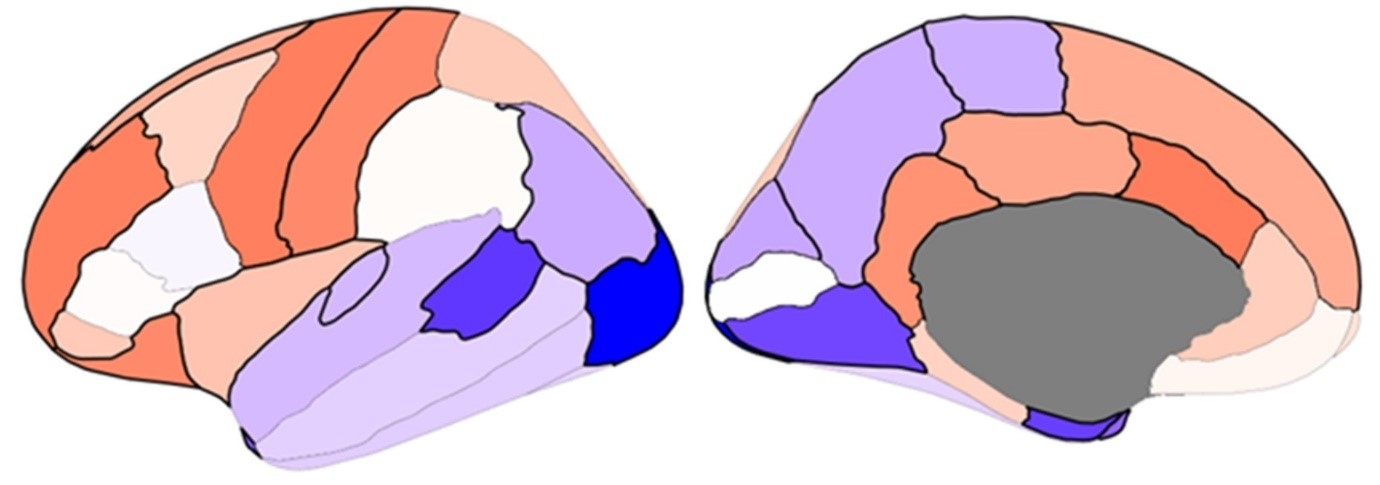Left–right asymmetry of the human brain is one of its cardinal features. Professor Francks leads the workgroup on brain asymmetry within the ENIGMA consortium, a network of neuroscientists and geneticists from around the world who cooperate to study data from tens of thousands of people. Decades of research have suggested that brain asymmetry may be altered in psychiatric disorders. However, findings have been inconsistent and often based on small sample sizes. The ENIGMA‐Laterality Working Group has published six studies of gray matter morphological asymmetry based on total sample sizes from roughly 3,500 to 17,000 individuals, which were between one and two orders of magnitude larger than those published in previous decades. Findings include an intriguing front-to-back gradient of cortical thickness asymmetry in healthy brains. We also found that autism spectrum disorder is associated with subtly reduced asymmetry of cortical thickness of regions spread widely over the cortex; pediatric obsessive–compulsive disorder is associated with altered subcortical asymmetry, and major depressive disorder is not significantly associated with changes of anatomical asymmetry. Ongoing studies are examining brain asymmetry in other disorders, and a groundwork has been laid for possibly identifying shared genetic contributions to brain asymmetry and disorders. Professor Francks talks about the ENIGMA consortium in this video.
Example publications:
Large-scale analysis of structural brain asymmetries in schizophrenia via the ENIGMA consortium https://www.pnas.org/doi/10.1073/pnas.2213880120
Altered structural brain asymmetry in autism spectrum disorder in a study of 54 datasets
https://www.nature.com/articles/s41467-019-13005-8
Mapping brain asymmetry in health and disease through the ENIGMA consortium
https://onlinelibrary.wiley.com/doi/full/10.1002/hbm.25033
Mapping cortical brain asymmetry in 17,141 healthy individuals worldwide via the ENIGMA Consortium
https://www.pnas.org/content/115/22/E5154.short
Figure: Average left-right asymmetries of cortical thickness across cerebral cortical regions. Red: thicker cortex on the left hemisphere. Blue: thicker cortex on the right hemisphere.

Share this page